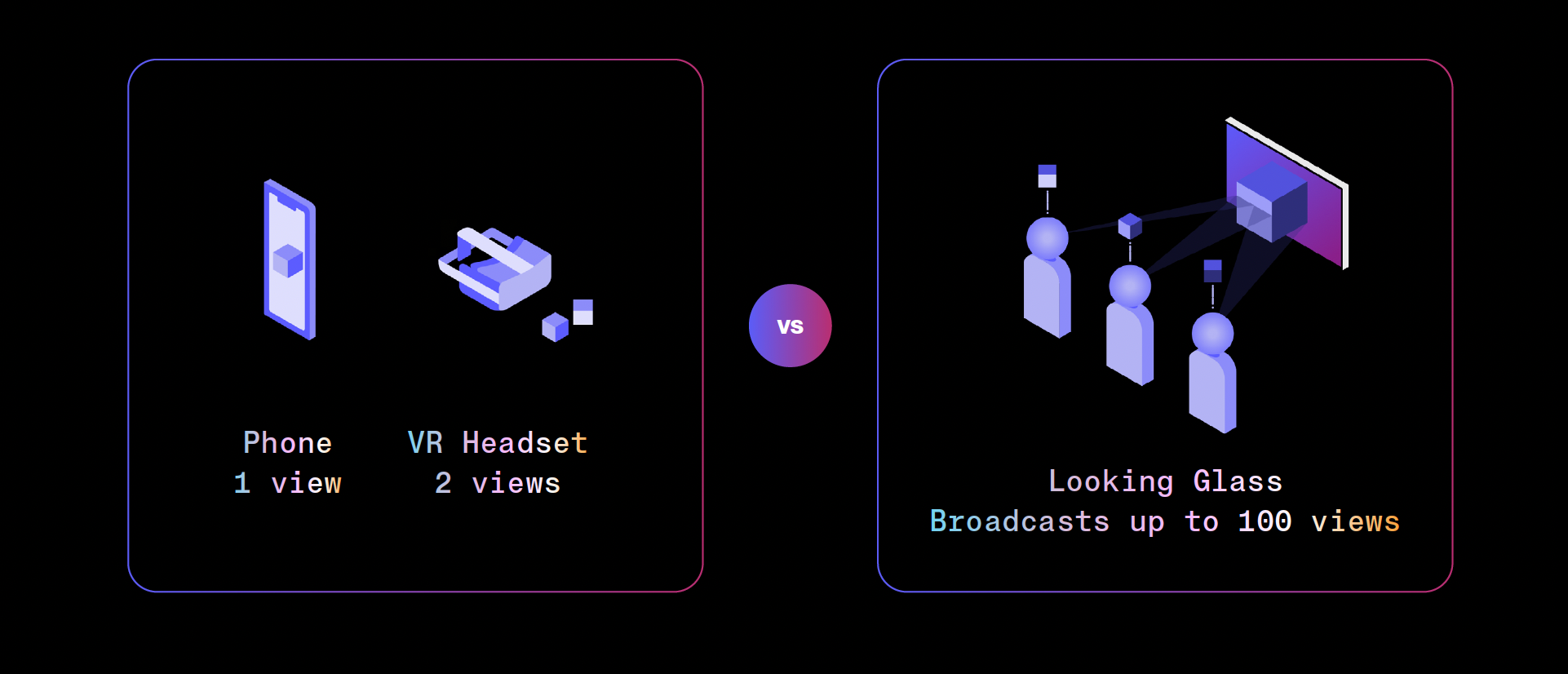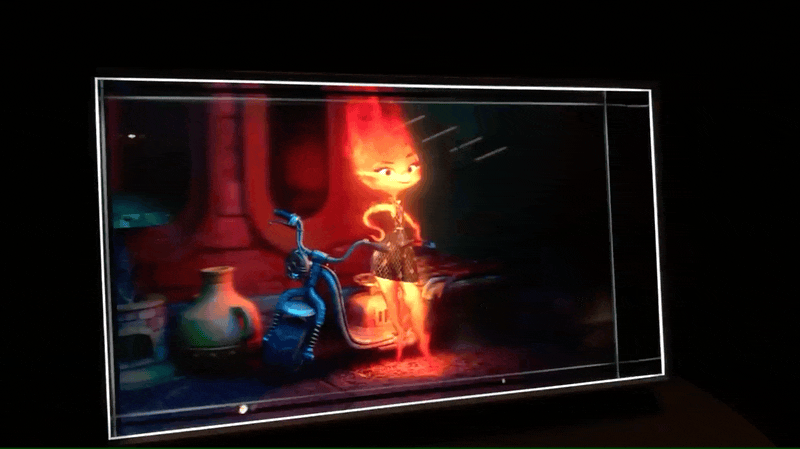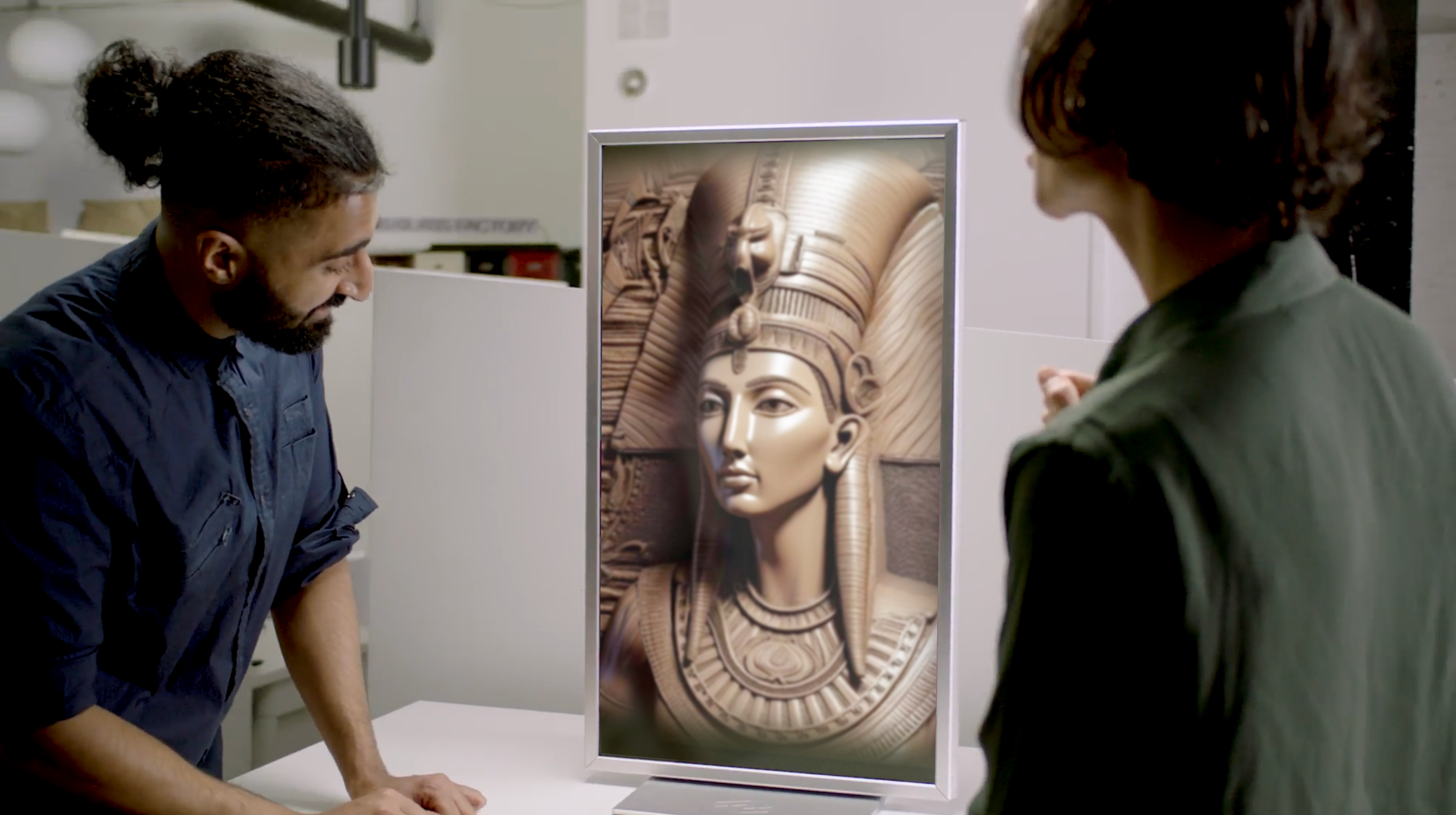The Holographic Shift: How Accessible 3D Experiences are Transforming Industries

A few days ago, we announced the Looking Glass 32" Spatial Displays in both landscape and portrait orientations — a launch that completes our full line up of next-generation spatial displays. I'm personally super excited to see this finally come to fruition, especially since the larger portrait form factor is something that many people have asked us about countless times over the last few years.
The importance of accessible 3D
Over the last decade, one of the biggest challenges I've seen in the adoption of 3D experiences has been the way in which it has been deployed — headsets — which can seriously hinder collaboration and limit accessibility. While admittedly, we have many friends who are developing a lot of cool hardware and software for these platforms, with Apple recently embracing this future with the launch of the Apple Vision Pro, we're continuing down the unencumbered path here with the newest Looking Glass 32” displays and re-releasing a new form factor of the Looking Glass 16" Spatial Displays (with OLED).
Both these new displays provide a large, immersive visual field that allows multiple people to look at a 3D scene at the same time, much like all of our displays that have come before, now with an even sleeker design and more lightweight form factor.

For those who are new here, you might be wondering, how do we do this? It's a way of tweaking how light is bounced out from our displays (proprietary, of course!) that we've perfected by launching multiple dozens of prototypes over the last ten years.
(Yes, we've been at this for a while now.)

Spatial, enhanced
Whether it's aerospace engineering, computational chemistry, or education, relying on the ability to perceive and interact with 3D information is often crucial. Traditional 2D displays can fall short in conveying the depth, scale, and complexity of 3D models and data, and headsets, while immersive, can be cumbersome, frustrating, and just not designed to work well for groups of people.

The Looking Glass 32" Spatial Displays bridge this gap by offering the most lifelike digital representation possible, allowing users to understand and manipulate 3D content intuitively — what you see in the display is exactly as is. No tricks. No magic. The digital objects in the display are as real as the world around you. ow
A use case for every industry
We've had the 32" form factor for a while now, and we've already seen many customers use our previous generation 32" displays as a way to present themselves as pioneers in their industry. Whether it's Bulgari using them to display details of their latest watch complication, or the animation team at Pixar looking to bring to life their characters in true-to-life form, or even conversational AI avatars being used to meet and mingle with guests at Cannes Lions on the French Riviera — there is a use case every which way you look. Most recently (and the most memorable), a 32” Looking Glass was deployed at this year's BCON in LA, with Andi the Android Liteform deployed as a conversational AI host.

Separately, we're hearing from our customers in medical education that traditional cadaver-based learning is often expensive, and a life-size 3D display that everyone can see offers students a more engaging and cost-effective way to study anatomy. For customers working with digital twins and simulations, the 32" Spatial Display lets engineers and stakeholders visualize complex models together in real-time, leading to better analysis over time and eventually, cost reduction in workflows. And of course, no one loves 3D more than museums — the ability to showcase life-size replicas of digitized artifacts can fundamentally change the way visitors interact with our planet's history and culture.
Over the last year, I've been hearing from so many companies wanting to use this orientation to develop applications around AI avatars and assistants in retail spaces, showrooms, and events. The brand new portrait orientation form factor that has never previously been available in the 32" size can finally service these use cases, and I can't wait to see some immediate applications start to emerge over the next few months.

Build on top of a powerful development platform
These two displays join a family of products that now sit on the desks of tens and thousands of creators around the world and the most unique aspect of what we have to offer is that our team designs not just the hardware but also the software that comes with operating and deploying these displays.
With a comprehensive software suite that includes plugins for popular 3D software like Unity, Unreal, and WebXR, as well as a robust native SDK, developers can build for whatever use case they can dream of. You can:
- Build your own applications with Unity, Unreal & WebXR.
- Playback pre-rendered media generated in Unreal, Blender and Unity with Looking Glass Studio or headless for installations.
- Render out advanced photography techniques like Gaussian Splats to be played back in a running loop with our desktop media studio.
- View and inspect interactive 3D models for gltfs, fbx, stls, objs, etc. (We’ll be re-releasing a new version of our 3D Model Importer soon!)
- Integrate your existing software with Looking Glass displays with Looking Glass Core / SDK.
- Customize and chat with conversational AI characters with Liteforms.
- View thousands of pre-made holograms on the web with our holographic media sharing platform.
We’ll dive into each of these technologies a little bit more in future posts but we wanted to reiterate that as technology providers, we know our job is to ensure that we're building (and supporting) the tools that enable developers to dream up their own playground.
Most of all applications and content created with one display can be easily shown in all other displays with some slight tweaking to ratio and resolution which means that if you're already an existing customer, or you're just looking to get a taste of the future with something smaller, you can. And you can rest assured that whatever you make with the smaller sized displays will translate seamlessly into the larger ones.
Over the last few years, we've put together a comprehensive set of developer documentation that allows anyone to start from zero and get to hologram in no time. And if you need any more help than that, that's what we're here for. Our mighty team has solved almost any problem you can think of. We make software and hardware — we've seen it all.
The next step for display technology and innovation
Over the next few weeks, we'll be putting together a lineup of case studies and deep dives into specific features that we think make the 32" Looking Glass unique compared to most other displays / solutions on the market. We're super stoked to continually deliver on the promise of accessible and immersive 3D experiences that go beyond the pages of science fiction, but are here today. The earliest units from the first batch will start shipping shortly over the next few months. Contact our sales team today to learn more about the displays.
If you'd like to get a feel for what the Looking Glass 32" Spatial Displays are before diving straight in, I'd recommend you check out the Looking Glass 16" Spatial Displays or even the Looking Glass Go for something smaller and more compact. Now in a matching sleek aluminum form factor, these units will start shipping at the end of next month with pre-order pricing coming to a close very soon. We've seen many teams start developing on the 16" displays and using the 32" as a centerpiece for their interactive installations and experiences.
As industries continue to embrace the potential of this technology, we're just as excited to learn with you and your team.